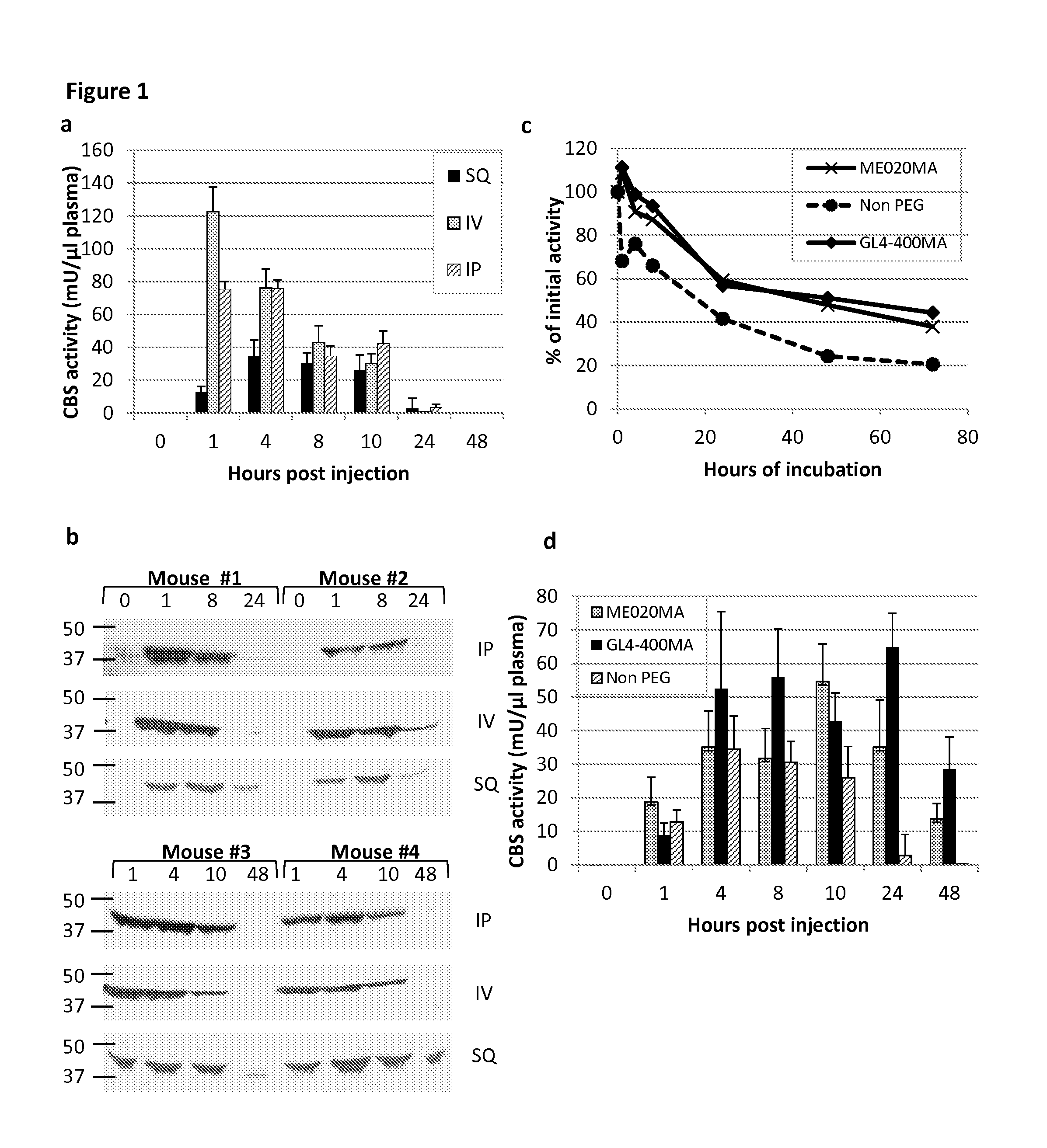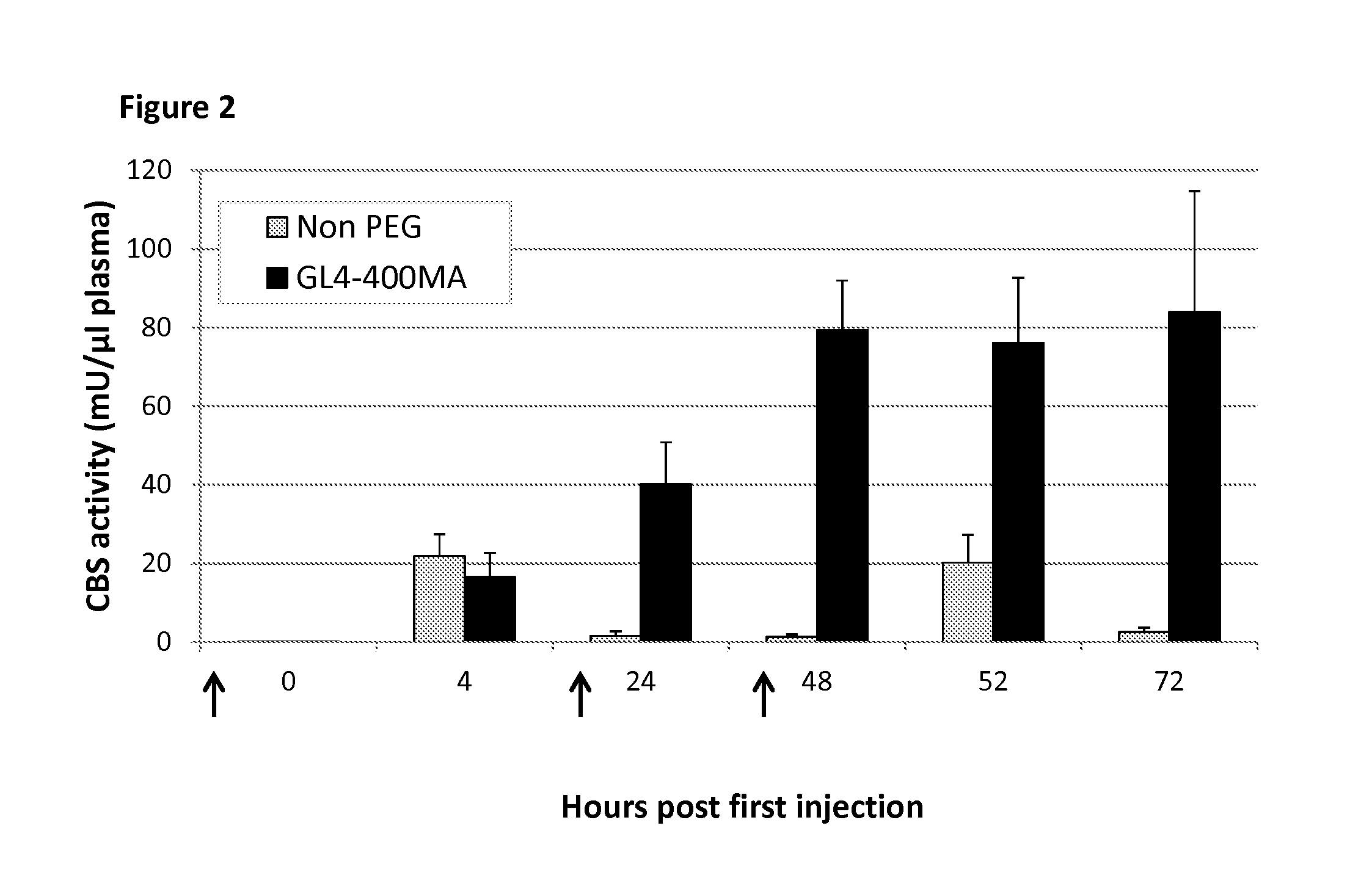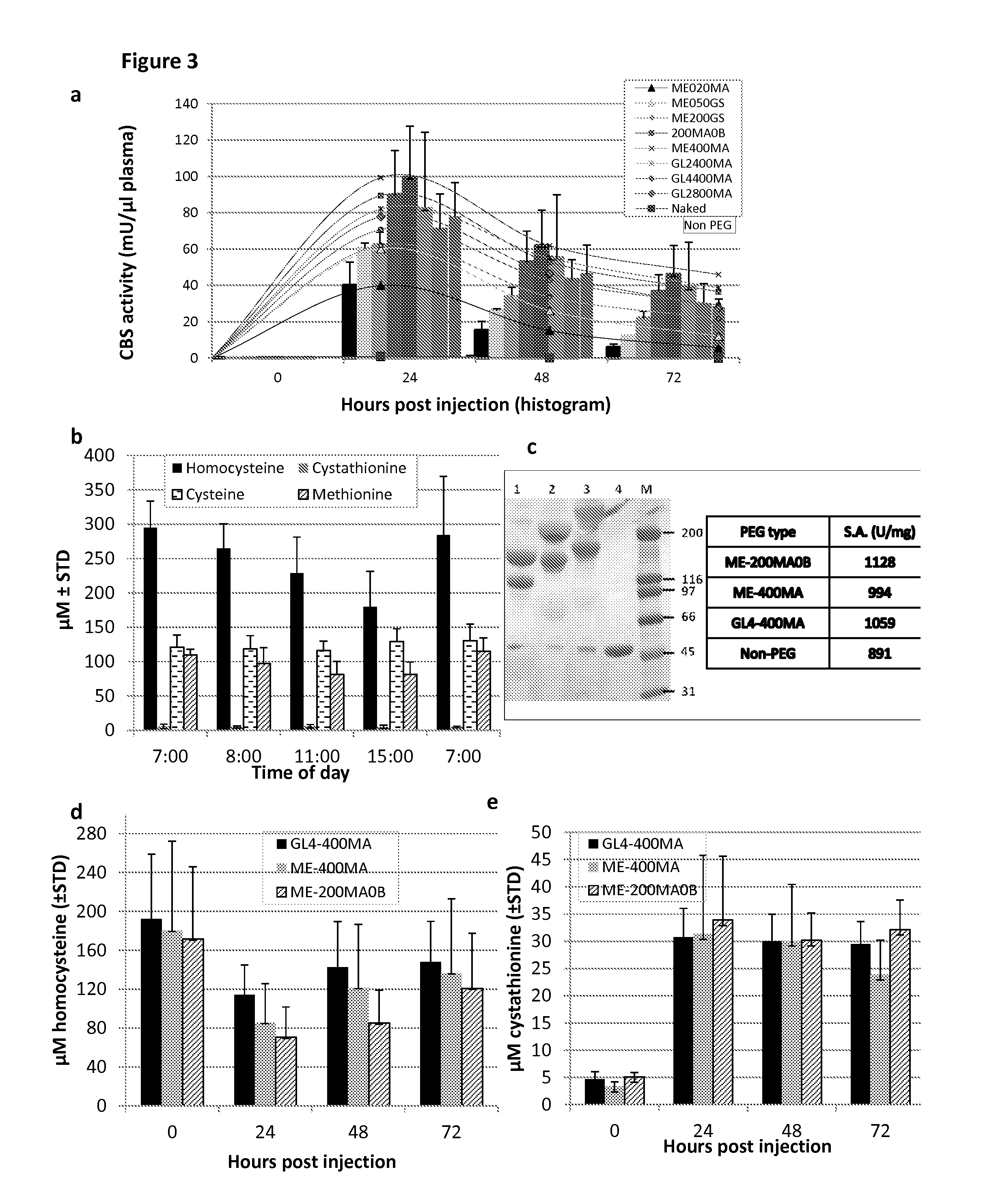Chemically modified cystathionine beta-synthase enzyme for treatment of homocystinuria
a cystathionine betasynthase and enzyme technology, applied in the field of enzyme replacement therapy, can solve the problems of inability to mitigate the pathological events of cbsdh patients, and high mortality rate in untreated and partially treated patients. , to achieve the effect of reducing serum hcy, improving stability, activity and medicinal utility, and reducing plasma hcy
- Summary
- Abstract
- Description
- Claims
- Application Information
AI Technical Summary
Benefits of technology
Problems solved by technology
Method used
Image
Examples
example 1
Production of Truncated CBS Protein in Bacteria
[0071]a. Recombinant Expression of Truncated CBS Protein in Bacteria
[0072]A truncated human CBS variant lacking specific portions of the non-conserved regions (r-hCBSΔC; SEQ ID No: 3) was constructed and over-expressed using the previously described E. coli based expression system (Kozich and Kraus, 1992, supra Constructs encoding the truncated human CBS protein variant r-hCBSΔC (SEQ ID NO: 4) were generated by a modification of the previously described pHCS3 CBS expression construct (Kozich and Kraus, 1992, Hum. Mutat. 1:113-123) which contains the CBS full-length coding sequence (SEQ ID NO: 1) cloned into pKK388.1. To generate C-terminal deletion constructs, CBS cDNA fragments spanning the desired nucleotide residues were amplified using primers incorporating Sph I and Kpn I sites to the 5′ and 3′ respective ends of the PCR product. All PCR products were then cut with Sph I and Kpn I and cloned by ligation into the pHCS3 vector digest...
example 2
Plasma Retention Time In Vivo and Enzymatic Activity In Vitro are Enhanced Following rhCBSΔC PEGylation
[0098]Once administered to patients, the rhCBSΔC enzyme was expected to be active in circulation in the blood. CBS enzyme activity was assayed as set forth in Example 1 and found to decrease when incubated in plasma in vitro at 37° C. (40% and 20% of activity following 24 h and 48 h incubation, respectively) as shown in FIG. 1b.
[0099]In order to confirm that the loss of activity observed in vitro also occurred in vivo, experiments were performed where C57BL / 6J mice were injected with 5 mg / kg body weight of the rhCBSΔC via intra-peritoneal (IP), intra-vascular (IV) or sub-cutaneous (SQ) routes. To avoid excessive bleeding, two experimental groups (denoted 1 and 2) of five mice each were used for each injection route (total n=30). For each injection route, blood was collected from group 1 at 0, 1, 8 and 24 hours post injection and from group 2 at 1, 4, 10, and 48 hours post injectio...
example 3
Repeated Injection Regimen with PEGylated, but not with Non-PEGylated rhCBSΔC, Exhibited Buildup of CBS Activity In Vivo
[0105]Rapid clearance rate of a protein from the circulation may be bypassed by increasing the number of injections to maintain higher plasma concentrations. Accordingly, a repeated injection regimen was tested with both non-PEGylated and PEGylated rhCBSΔC. C57BL / 6J mice were injected at 0, 24, 48 hours (arrows in FIG. 2) with 5 mg / kg body weight of non-PEGylated rhCBSΔC (n=5) or with GL4-400MA rhCBSΔC (n=5) and bled at the indicated time points. Plasma was analyzed for CBS activity using the radiometric activity assay set forth in Example 1. As shown in FIG. 2, repeated injections of non-PEGylated enzyme failed to improve activity of the enzyme in circulation, resulting in nearly no activity 24 h after each injection. The latter finding is in sharp contrast to the activity of the PEGylated enzyme that peaked after two injections, before reaching a plateau. Thus, e...
PUM
 Login to View More
Login to View More Abstract
Description
Claims
Application Information
 Login to View More
Login to View More - R&D
- Intellectual Property
- Life Sciences
- Materials
- Tech Scout
- Unparalleled Data Quality
- Higher Quality Content
- 60% Fewer Hallucinations
Browse by: Latest US Patents, China's latest patents, Technical Efficacy Thesaurus, Application Domain, Technology Topic, Popular Technical Reports.
© 2025 PatSnap. All rights reserved.Legal|Privacy policy|Modern Slavery Act Transparency Statement|Sitemap|About US| Contact US: help@patsnap.com



